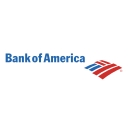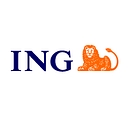
Want to dig deeper on National Bank of Canada and thousands of companies?
Rapidly search an extensive universe of public and private content — earnings transcripts, company filings, equity research, trade journals, and more.
Request a Free TrialCompanies by industry
Aerospace & DefenseAutomobile ComponentsAutomobilesBanksBeveragesBiotechnologyBroadline RetailCapital MarketsChemicalsCommunications EquipmentConsumer FinanceConsumer Staples Distribution & RetailContainers & PackagingElectric UtilitiesElectronic Equipment, Instruments & ComponentsEnergy Equipment & ServicesEntertainmentFinancial ServicesFood ProductsGround TransportationHealth Care Equipment & SuppliesHealth Care Providers & ServicesHotels, Restaurants & LeisureHousehold DurablesHousehold ProductsIT ServicesIndustrial ConglomeratesIndustrial REITsInsuranceInteractive Media & ServicesLife Sciences Tools & ServicesMachineryMediaMetals & MiningMulti-UtilitiesOil, Gas & Consumable FuelsPersonal Care ProductsPharmaceuticalsSemiconductors & Semiconductor EquipmentSoftwareSpecialized REITsSpecialty RetailTechnology Hardware, Storage & PeripheralsTextiles, Apparel & Luxury GoodsTobaccoWireless Telecommunication Services
National Bank of Canada Earnings - Analysis & Highlights for Q1 2025
Overview
PositivesNegativesOutlook
- Loans were up by 7% YoY and 1% QoQ, highlighting broad-based growth on both sides of the balance sheet.
- Revenue was up by 3% on the corporate and investment banking side.
- P&C Banking generated net income of CAD 290 million in Q1, with underlying growth more than offset by the credit cycle impact.
- ABA grew its loan book by 9% YoY in Q1.
- EPS on an adjusted basis will be impacted by the amortization of the mark and the issuance of common shares in the context of the acquisition.
- The company continues to anticipate further increases in delinquencies and impaired PCLs in retail portfolios and lumpiness in wholesale portfolios.
- The Canadian economy has continued to show signs of weakness, including slow economic growth and a soft labor market.
- The company observed results were impacted by very few files in Q1.
- The gross impaired loan ratio increased to 79 basis points, up 11 basis points sequentially.
- The company expects revenue upside in both NII and fee income.
- The company expects provisions to be primarily driven by portfolio growth and mix.
- The company continues to anticipate further increases in delinquencies and impaired PCLs in retail portfolios and lumpiness in wholesale portfolios.
- The company expects revenue upside from incremental revenue opportunities.
- The company expects to share the strategy as the year unfolds.
Q&A Highlights from National Bank of Canada Earnings Call Q1 2025
- Analyst asked about the timing of providing revenue synergy guidance related to the CWB acquisition.
- The company is not providing specific guidance on revenue synergies related to the CWB acquisition, but it will be in a position to provide guidance later in the year.
- The company is not providing specific guidance on revenue synergies related to the CWB acquisition, but it will be in a position to provide guidance later in the year.
- Analyst asked about the company's capital management strategy and plans for buybacks.
- The company is pleased with its current capital levels, and plans to initiate buybacks in 2026, subject to approval by the board. The company will provide a full capital deployment plan in Q4 of 2025. The company is focused on integrating the CWB acquisition and monitoring the current economic environment, which includes trade concerns, credit cycle uncertainty, and monetary policy changes. The company wants to maintain optionality and flexibility in its capital management strategy, and will consider buybacks as part of its plan.
- The company is pleased with its current capital levels, and plans to initiate buybacks in 2026, subject to approval by the board. The company will provide a full capital deployment plan in Q4 of 2025. The company is focused on integrating the CWB acquisition and monitoring the current economic environment, which includes trade concerns, credit cycle uncertainty, and monetary policy changes. The company wants to maintain optionality and flexibility in its capital management strategy, and will consider buybacks as part of its plan.
- Analyst asked about the normalization of capital markets and if it's more broad-based across all divisions.
- Marie Chantal Gingras explained that capital markets had a substantial quarter, but the company does not expect to replicate that performance for the rest of the year. Étienne Dubuc added that the outlook for financial markets is solid, but aligned with long-term trends, and the company is confident in its ability to deliver year-over-year net income growth for the remainder of the year.
- Marie Chantal Gingras explained that capital markets had a substantial quarter, but the company does not expect to replicate that performance for the rest of the year. Étienne Dubuc added that the outlook for financial markets is solid, but aligned with long-term trends, and the company is confident in its ability to deliver year-over-year net income growth for the remainder of the year.
- Analyst asked about the resolutions of bad loans on the ABA, specifically the two-thirds of files that closed with no losses and the one-third that took losses.
- JeanSébastien Grisé explained that the guidance does not include CWB, and that the uncertainty in the market is driving the change in guidance. He also noted that the CWB portfolio is weighted towards wholesale assets, which typically gives more volatility, but there is no consumer unsecured, which reduces the risk content. Regarding the ABA, he explained that the loan to value (LTV) on gross impaired loans in the past was in the 50s, and that this includes lower LTVs and higher LTVs. He also noted that the company observes losses in cohorts with LTVs over 80%, which is not surprising.
- JeanSébastien Grisé explained that the guidance does not include CWB, and that the uncertainty in the market is driving the change in guidance. He also noted that the CWB portfolio is weighted towards wholesale assets, which typically gives more volatility, but there is no consumer unsecured, which reduces the risk content. Regarding the ABA, he explained that the loan to value (LTV) on gross impaired loans in the past was in the 50s, and that this includes lower LTVs and higher LTVs. He also noted that the company observes losses in cohorts with LTVs over 80%, which is not surprising.
- Analyst asked about the effect of CWB's addition on the company's ongoing dynamics.
- Lucie Blanchet, the company's management, confirmed that the addition of CWB and the negative effect of the marks are offsetting each other.
- Lucie Blanchet, the company's management, confirmed that the addition of CWB and the negative effect of the marks are offsetting each other.
- Analyst asked about the risk density of CWB's loans compared to National Bank's.
- Marie Chantal Gingras, the company's management, stated that it is a fair assumption that CWB's risk density will approximate National Bank's over the long term, and there is nothing unique to CWB that would prevent this from happening.
- Marie Chantal Gingras, the company's management, stated that it is a fair assumption that CWB's risk density will approximate National Bank's over the long term, and there is nothing unique to CWB that would prevent this from happening.
- Analyst asked about the impact of tariff uncertainty on National Bank of Canada's commercial loan book.
- The company is in close contact with its clients and is confident in its low-double-digit growth outlook for the year. The underlying intrinsics of the insured commercial real estate remain positive, despite the second and third order effects of tariffs. The company is not worried about any particular exposure within the commercial loan book, as the structure of each client's contract is important in terms of passing the tariff impacts to OEMs or other companies. The company has a comfortable level of provisioning and performing provisionings, which are 2.1 times the last 12 months' impaired losses.
- The company is in close contact with its clients and is confident in its low-double-digit growth outlook for the year. The underlying intrinsics of the insured commercial real estate remain positive, despite the second and third order effects of tariffs. The company is not worried about any particular exposure within the commercial loan book, as the structure of each client's contract is important in terms of passing the tariff impacts to OEMs or other companies. The company has a comfortable level of provisioning and performing provisionings, which are 2.1 times the last 12 months' impaired losses.
- Analyst asked about the trajectory of the combined entity's return on equity (ROE) and whether it will return to National Bank-type standalone levels.
- Laurent Ferreira explained that the trajectory of the combined entity's ROE is a mix of everything, including capital optimization, and that the company is comfortable operating above 13%. He noted that the company's current ROE is 13.6%, which is a good position given the economic environment and the need to work on integration. He also mentioned that the company will provide more clarity on its strategy for growth and capital optimization by the end of the year.
- Laurent Ferreira explained that the trajectory of the combined entity's ROE is a mix of everything, including capital optimization, and that the company is comfortable operating above 13%. He noted that the company's current ROE is 13.6%, which is a good position given the economic environment and the need to work on integration. He also mentioned that the company will provide more clarity on its strategy for growth and capital optimization by the end of the year.
- Analyst asked about two files that created some lumpiness and whether they were already on the watch list.
- JeanSébastien Grisé confirmed that the two files were already on the watch list.
- JeanSébastien Grisé confirmed that the two files were already on the watch list.

















